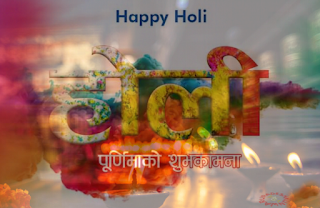इन्द्रजात्रा
इन्द्रजात्रामा विशेषः काठमाण्डौँ उपत्यकामा इन्द्र देवताको उत्सव मनाउन गरिने इन्द्रध्वजोत्थापन, लाखे नाच, रथयात्रा यास्ता विभिन्न क्रियाकलापहरु यस जात्रा हुने गर्दछ। इन्द्रजात्रा काठमाण्डौँमा
विशेष धुमधामसित मनाइन्छ भने ललितपुर र भक्तपुर पनि जात्रा गरिन्छ । यो जात्रा भाद्रशुक्ल द्वादशीदेखि
आश्विन कृष्ण चतुर्थीसम्म आठ दिन चल्दछ । द्वादशीका दिन हनुमान्ढोकाको अगाडि लिङ्गो
/ इन्द्रध्वजोत्थापन गरिन्छ। इन्द्रध्वजोत्थापनको
अर्थ इन्द्रको ध्वजालाई उठाउनु भन्ने हो । यस दिन र अरू दिन पनि देवदेवीहरूको
प्रदर्शन, विभिन्न सांस्कृतिक नाचगानको आयोजना र
दीपावलि गर्ने गरिन्छ । चतुर्दशीमा कुमारीको रथयात्रा गर्ने परम्परालाई मल्लकाल देखि चल्दैआएको छ ।
 |
| Aakash Vairab, Indrachok |
जयप्रकाश मल्लले
इन्द्रजात्रामा थपिदिएको सबैभन्दा ठूलो अंग हो 'जीवित देवी श्री कुमारीको रथयात्रा' । श्री कुमारीको रथयात्रा अहिले इन्द्रजात्राकै सबैभन्दा महत्त्वपूर्ण अंश बनिसकेको छ । जात्रामा श्री कुमारीका रूपमा पुजित जीवित बालिकालाई रथमा विराजमान गराई नगर परिक्रमा गराइन्छ । रथयात्राको अघि–अघि जीवित देवताहरू श्री गणेश र श्री भैरवको रथ पनि तानिन्छ । जीवित बालिकालाई कुमारीका रूपमा पूजा–आराधना गर्ने चलन काठमाडौंलगायत पाटन, भक्तपुर र अन्य नगरमा पनि छ ।
इन्द्रजात्राको
कथा
लिङ्गो / इन्द्रध्वज
पौराणिक कथा अनुसार,
असुरबाट पराजित देवराज इन्द्र विष्णु भगवानको शरणमा पुगनु भएछ विष्णुले इन्द्रलाई
यो ध्वजा लिएर युद् गर्न गयौ भने विजयी हुनेछौ भनेर ध्वजा दिएको प्रसङ्ग आउँछ ।
त्यसपछि इन्द्र विजयी भएको र इन्द्रले असुरमाथि विजय प्राप्त गरेपछि ध्वजाको पूजा
तथा उत्सव पनि हुन थालेको भन्ने कथा पाइन्छ ।
इन्द्रजात्रा कथा
१
किंवदन्ती अनुसार, स्वर्गका राजा इन्द्रलाई
पारिजातको फूल चाहिएको थियो । उनकी आमा बसुन्धरा व्रत बसेकी थिइन् । यसकै लागि पारिजातको फूल चाहिन्थ्यो । इन्द्र झरे काठमाडौंको भीमसेनस्थानतिर । त्यहाँ एउटा बगैंचा थियो । त्यहीं फूल टिप्न खोज्दा मालीले उनलाई समातिहाले । इन्द्रले फूल टिप्न अनुमति लिएकै थिएनन् । फेरि ती माली पनि कम्तीका थिएनन् । तान्त्रिक थिए । इन्द्र जत्तिको देवतालाई पनि सबैले देख्ने गरेर लिंगोमा बाँधेर
राखे । छोरा नफर्केपछि आमाले ऐरावत हात्तीलाई खोज्न पठाइछिन् । इन्द्र त समस्यामा रहेछन् । आमा आफैं काठमाडौं झरिन् । त्यो पनि बौलाहीको वेशमा । छोराको स्थिति देखेर उनी छक्क परिन् । पछि धानबाली समयमै पाक्ने दिने बचन दिइन् । त्यति मात्र नपुगेर मरेकालाई स्वर्ग लान पनि मानिन् । अनि आफ्ना छोरालाई स्वर्ग फर्काइन् । इन्द्रकी आमाको बचनअनुसार काठमाडौंका खेतबारी राम्रा हुन थाले । अनि मरेकाहरू पनि स्वर्ग जान थाले ।
इन्द्रजात्रा कथा
२
देव–दानव मिलेर
समुद्रमन्थन गर्दा निस्केका वस्तुहरूमध्ये पारिजात फूलको वृक्ष नेपाल उपत्यकामा
रहेको थियो। एउटा ज्यापूले (किसान) त्यस
पारिजात वृक्षको वरिपरि आकर्षक फूलले सुशोभित बगैँचा बनाएका थिए । त्यस बगैँचाको
सौन्दर्य देखेर देवराज इन्द्रले नेपाल उपत्यकामा आएर आफूलाई मनपर्ने पारिजातको फूल
टिपेर स्वर्गमा लैजाने गर्दथे । त्यस बगैँचाको मालिक किसानले पारिजातको फूल चोरी
भएको चाल पाएर फूल चोर्ने इन्द्रलाई एक दिन पक्रिए । इन्द्रले किसानसँग क्षमा मागे
।
किसानले हाम्रा
राजा पनि तपाईँको भक्त हुनुहुन्छ, उहाँलाई पनि दर्शन दिएर जानुहोला भनी इन्द्रलाई राजाकहाँ
पुर्याए । राजाले इन्द्रलाई आदरका साथ सत्कार गरी भने- तपाईँको दर्शनले म धन्य भए प्रभु
भने। मेरा प्रजाहरूले पनि तपाईँको दर्शन गर्न पाउनुपर्छ भनी प्रजाहरूलाई यथाशक्ति
धूप, बत्ती, माला लिएर स्वर्गका राजा इन्द्रको दर्शन गर्न आउनू भनी खबर
गरे । प्रजाहरू भेला भएर इन्द्रदेवको पूजा गरे ।
यहाँका राजा र
प्रजाको भक्तिभाव देखेर प्रसन्न भएका इन्द्रले उनीहरूलाई वरदान माग्न भने ।
उनीहरूले— हे इन्द्रदेव हाम्रा देशमा आएर हामीलाई दर्शन दिनुभएको आजका दिनलाई हामी
महान् पर्व सम्झन्छौँ । यस दिनका स्मृतिमा प्रतिवर्ष आजकै दिन
भाद्रशुक्ल द्वादशीदेखि आश्विन कृष्ण चतुर्थीसम्म तपाईँका साथै स्वर्गका
देवदेवीको स्वागत गर्न पाऔँ भनी वरदान मागे । इन्द्र तथास्तु भनी स्वर्ग गए । यसै
वरदानले गर्दा त्यस द्वादशीदेखि चतुर्थीसम्म आठ दिन वर्षैपिच्छे इन्द्रसहित
देवदेवीहरू यस उपत्यकामा आइदिने भए ।
इन्द्रको स्वागतका निमित्त विधिवत् ध्वजा–पताकाका साथ लिङ्गो उभ्याई दीपावली गर्ने चल्न चल्यो । पछि स्वर्गका राजा इन्द्र र यस उपत्यकाका राजाको सल्लाहअनुसार अब कलियुगको प्रभाव पर्ने समय आएकाले अबउप्रान्त स्वर्गबाट प्रत्यक्ष रूपमा देवता नआउने, तर नगरमा काठ, ढुङ्गा र धातुबाट देवमूर्ति बनाई आराधना गरेमा ती आठ दिनसम्म ती मूर्तिहरूमा स्वर्गका देवदेवीहरूको प्रादुर्भाव हुने भनी दुवैले परस्पर सम्झौता गरे । त्यसै वेलादेखि नगरवासीहरूले इन्द्रजात्राका आठ दिनका लागि देवमूर्ति बनाई आआफ्ना घरअगाडि स्थापना गरी देवतालाई आह्वान गर्न थाले ।
Reference
1.
Nepal opinion “इन्द्रजात्राको वैदिक र लौकिक तात्पर्य”
2.
Kantipur News “मौलिक महोत्सव येँ याः”




